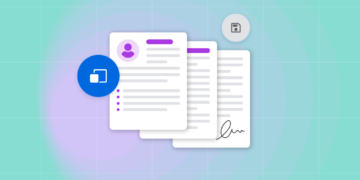Introduction
In today’s digital landscape, email surveys serve as indispensable tools for extracting insights from target audiences. However, amidst the deluge of emails inundating inboxes, the fate of these surveys often hangs on a single element: the subject line. Crafting a captivating subject line is crucial for grabbing recipients’ attention and enticing them to engage with the email survey. In this comprehensive guide, we will explore various strategies and techniques for crafting unique email survey subject lines that captivate readers. From personalized approaches to leveraging emotional appeal and avoiding common pitfalls, we will uncover tactics to elevate the success of your email survey campaigns.
1. Personalized Subject Lines
Personalization lies at the heart of effective email marketing, and it’s equally essential for crafting compelling email survey subject lines. By addressing recipients by name or referencing previous interactions, marketers can cultivate a sense of connection and relevance that resonates with recipients. For example, subject lines like “Hey [Name], Your Feedback Matters!” or “We Want Your Opinion, [Name]!” add a personal touch, increasing engagement. Leveraging customizable tools such as Klaviyo newsletter templates allows marketers to scale personalization efforts effectively. These templates offer tailored solutions for crafting subject lines that feel human and resonate with individual recipients, fostering a deeper connection and prompting higher engagement levels.
2. Emotional Appeal
Emotions wield significant influence over human behavior, making emotional appeal a potent tool for crafting compelling email survey subject lines. By tapping into recipients’ emotions, marketers can evoke responses that go beyond mere curiosity, driving active engagement. Subject lines like “Discover Something Exciting: Participate in Our Survey Now!” or “Your Voice Matters: Share Your Feedback Today!” evoke feelings of excitement and validation, compelling recipients to take action. Understanding the emotional landscape of your audience is crucial for crafting subject lines that resonate deeply and drive meaningful engagement. By infusing subject lines with emotion, marketers can forge a stronger connection with recipients, thereby increasing the likelihood of survey participation and garnering valuable insights.
3. Incentivization Strategies
Incentivizing survey participation is a proven method for boosting engagement levels, and this principle extends to email survey subject lines as well. By offering rewards, discounts, or exclusive offers in the subject line, marketers can create a sense of value and urgency that motivates recipients to participate. Subject lines like “Unlock Special Rewards: Take Our Survey for Exclusive Benefits!” or “Your Feedback Could Win You Exciting Prizes!” leverage the power of incentives to drive engagement. Integrating enticing offers into subject lines not only increases open rates but also encourages recipients to provide honest feedback. However, it’s essential to strike a balance between incentivization and survey integrity to ensure the authenticity of responses and maintain the survey’s credibility.
4. Question-Based Subject Lines
Posing thought-provoking questions in email survey subject lines can pique recipients’ curiosity and prompt them to open the email. By crafting subject lines that stimulate introspection and reflection, marketers can intrigue recipients and compel them to participate in the survey. For instance, subject lines like “Curious About Our Services? Share Your Thoughts in Our Survey!” or “How Can We Improve? Have Your Say Today!” engage recipients by inviting them to voice their opinions and provide valuable feedback. Integrating customizable tools like Klaviyo newsletter templates streamlines the process of creating question-based subject lines, allowing marketers to tailor their approach to match the preferences and interests of their target audience.
5. Avoiding Spam Trigger Words
Maintaining deliverability and engagement hinges on steering clear of spam trigger words that could hinder email survey subject lines’ effectiveness. By avoiding terms like “free,” “discount,” “click here,” and “limited time offer,” marketers can ensure that their subject lines evade spam filters and reach recipients’ inboxes. Instead, opting for clear, concise language that accurately reflects the survey’s purpose enhances the likelihood of email delivery and engagement. Subject lines such as “Share Your Feedback Today!” or “Help Us Improve: Take Our Short Survey!” effectively communicate the survey’s intent without triggering spam filters. Additionally, eschewing excessive punctuation, capitalization, or misleading language preserves the authenticity of the email survey, fostering trust and credibility among recipients.
6. A/B Testing and Optimization
A crucial aspect of crafting effective email survey subject lines involves A/B testing and optimization. By experimenting with different variations of subject lines and analyzing key metrics, marketers can identify the most resonant approaches and refine their strategies over time. Testing variations in wording, tone, length, and formatting enables marketers to gauge audience preferences and tailor their subject lines accordingly. Analyzing metrics such as open rates, click-through rates, and survey completion rates provides valuable insights into subject line performance, allowing marketers to optimize their approach for maximum impact. Leveraging A/B testing enables marketers to iteratively improve their email survey subject lines, ensuring ongoing relevance and effectiveness in engaging recipients. By adopting a data-driven approach to optimization, marketers can continuously refine their subject lines and maximize their email survey campaigns’ success.
Conclusion
Crafting unique and compelling email survey subject lines is integral to driving engagement and maximizing survey campaign success. By incorporating personalized touches, leveraging emotional appeal, offering incentives, posing thought-provoking questions, avoiding spam trigger words, and conducting A/B testing, marketers can create subject lines that resonate with recipients and inspire them to participate. Striking a balance between creativity and authenticity ensures subject lines effectively communicate the survey’s purpose while fostering trust and credibility among recipients. With careful planning and optimization, marketers can create subject lines that capture readers’ attention and encourage them to provide valuable feedback, ultimately driving business growth and customer satisfaction.
David Prior
David Prior is the editor of Today News, responsible for the overall editorial strategy. He is an NCTJ-qualified journalist with over 20 years’ experience, and is also editor of the award-winning hyperlocal news title Altrincham Today. His LinkedIn profile is here.













































































